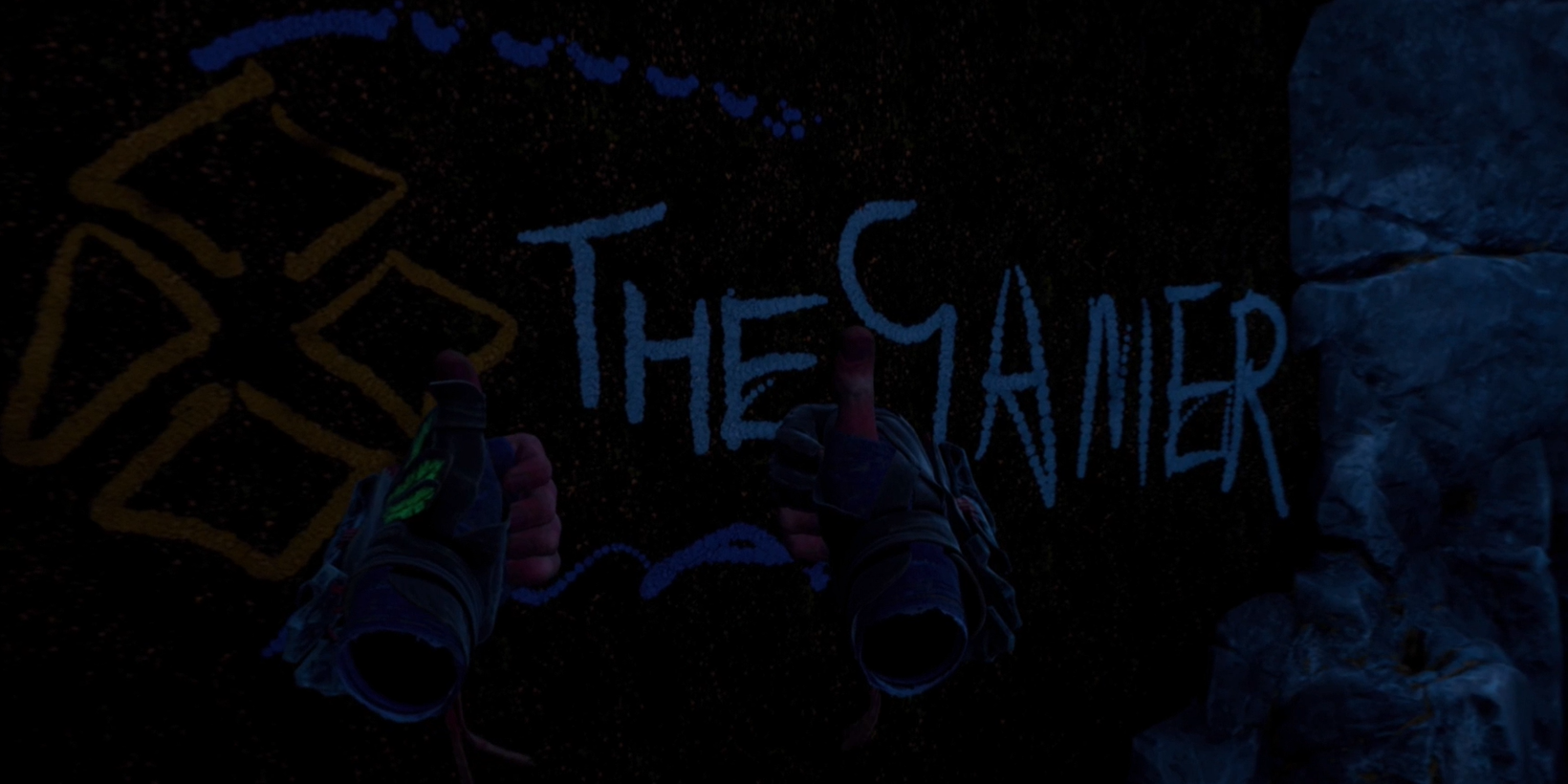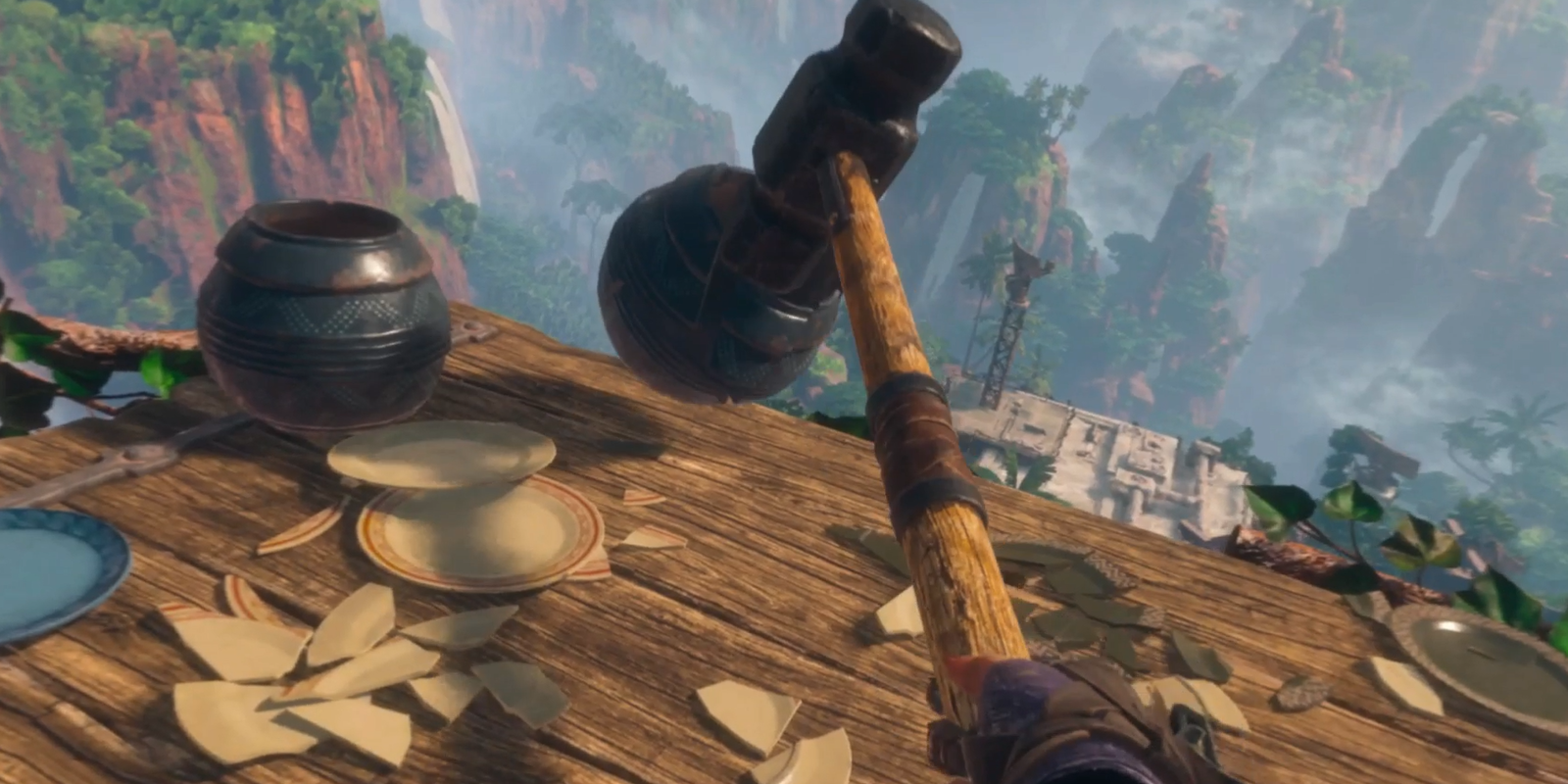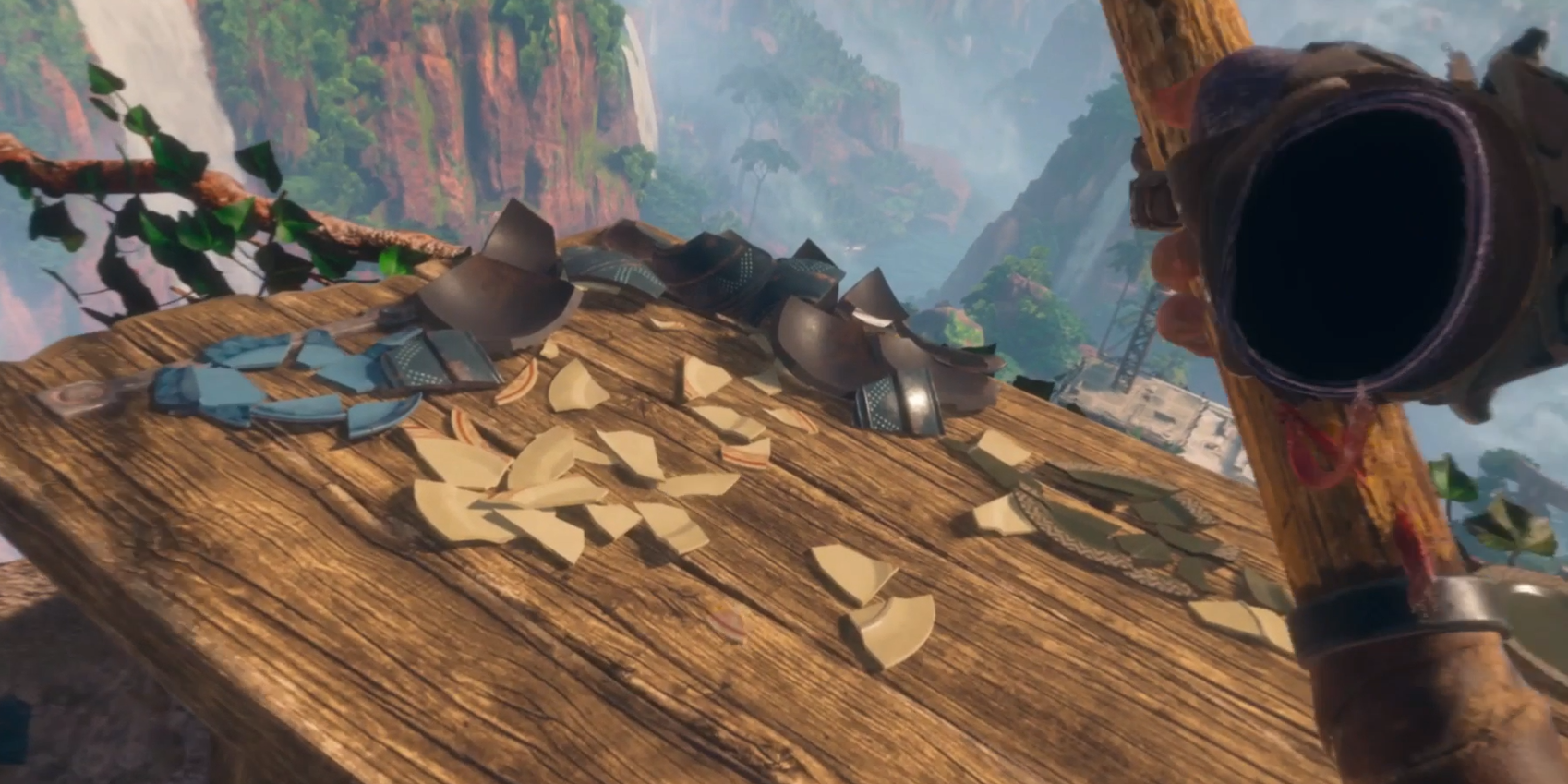The central appeal of VR games is the immersion they offer, and Horizon Call of the Mountain understands this perfectly. Though we don’t play as Aloy, much of the gameplay is similar to that of the main series - we climb cliff faces, fight huge beasts, and stare out over gorgeous vistas. The game knows that its central brief is to make the player feel like they are living inside the world of Horizon. As you stand on the edge of a mountain and look down at the raging rivers below, it delivers, but it’s most special in its smallest moments.
Call of the Mountain involves a lot of climbing. If you thought Aloy was constantly scrambling up rocks daubed in convenient white paint before, you ain’t seen nothing yet. While later climbing sections can be more interesting, stringing together different gadgets and stunt jumps while offering better variety of what exactly it is you’re ascending, a lot of the early examples can feel dull. You put one hand in front of the other and still need to get used to the button grips, and all you can see is the close up of some ugly rocks. Thankfully, it’s easy to jazz these up.
When climbing ropes, for example, you can look down or behind you to take in the wonder of the world. There are zip lines you can slide down, and while in motion if you turn to your side you’ll see the dense valleys slip by. When you look around, you’ll be taken in by this huge world, but the impressions never seem to last. You hit an array of settings by the end of the game, exploring everywhere from dusty deserts to icy tundras, but it excels when you can hold the world in your hand with the freedom to shape it.
Part of the immersion that VR offers is not just in how you’re surrounded by the game on all sides, but the translation of your physical movements in the real world having a tangible effect on things. For example, most of the upgrades or craftable materials are inside boxes, and you must reach out and grab the lid to peer inside. Crafting itself also requires you to pick each individual part up and assemble it bit by bit. In non-VR games, this is either automatically performed or is the work of holding down a button or two. Here it feels real.
The game provides plenty of opportunities for you to experiment with these smaller movements as well. Various musical instruments are scattered throughout the world, for no reason other than the fact it’s fun to shake your maracas or bang some drums. Paintbrushes are also present at different moments, letting you scrawl murals on cave walls. It’s these finer moments of control that showcase VR’s technical proficiency rather than the sunsets behind the mountain. The best part of it all, however, is simply breaking shit.
Pretty much everything can be picked up in Call of the Mountain, and quite a lot of the trinkets you find are clay bowls or plates. You can, if you like, pick them all up and arrange them delicately around the table, as if preparing for a feast. If you’re like me though, you’ll be much more interested in throwing them on the ground. These bowls will explode with a satisfying smash, and you can even bash them together or use your tools to shatter them into smithereens. Sure, it’s neat to lean away from a metal tower and see the world quivering beneath me, but it’s not a patch on the catharsis of destroying a vase or yeeting a pile of plates off a cliff.
Horizon did not seem like the easiest game to adapt to the VR medium. While my review noted a few ways where this framework hindered it, creating and making the player feel immersed in the world is not one of them. The big moments pack a punch, but it’s the small ones that pull you in. I don’t care about the next mountain I have to climb, only about what crockery I might get to destroy at the top of it.



